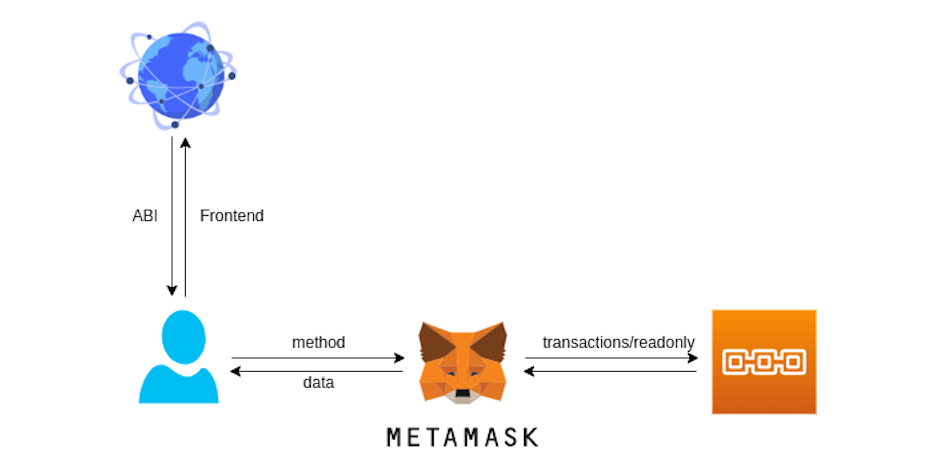 Hadas Bar
Hadas Bar
The first and most important question when we think about blockchain is to ask, “is blockchain the right solution for this?” we don't want to use it just because it is the latest trend in the computer world.
If we answer all of these questions, we are ready to use blockchain in our system. Which blockchain network do we want to use? Ethereum? Solana? A new one used only by us?
In the DFTB project, we chose Ethereum since it is relatively mature, easy to use, and has many nodes supporting it (about 8000). The Ethereum network allows us to use a mechanism called Smart Contract, which can store data that everyone can read. The smart contract has an ABI, similar to an API in traditional servers, describing its public methods.
We created two websites that use this ABI to show that connecting the blockchain from everywhere is possible.
The first one is English and has all functionality in the smart contract, and the second one is in Hebrew as a pilot for the next steps.
Those websites are static, meaning they are not using traditional backend servers.
Cuspis group built the first one, which includes:
Here are some materials for this website:
We in Hadas Bar were in charge of the Hebrew site. We built it using Angular 14.2 and the web3.js package connecting to it by the Metamask extension. This website has two main parts: first is a data tree containing all information stored in our smart contract, and the second is a developer's tool that can run each smart contract method.
As described in our previous data visualization post, this application's vision is to create different visualization for each stakeholder. We can achieve this by creating a standalone website or an application for each stakeholder or use. Or, we can create one application that suits everyone using a different configuration. Each method has pros and cons, but this is out of this post's scope.

This project has received funding from the European Union’s Horizon 2020 research and innovation program under grant agreement № 818182
Lets get in touch. Send us a message: